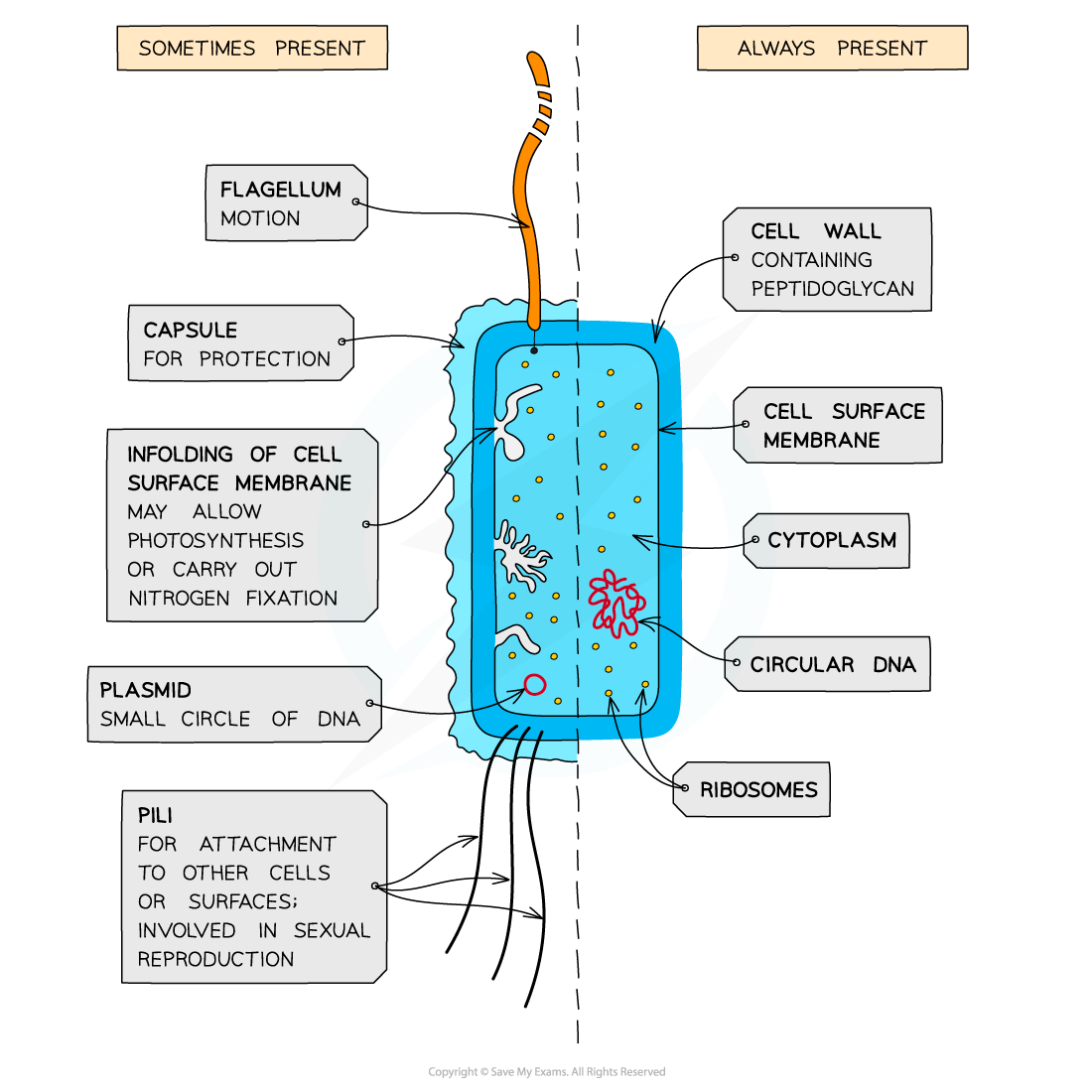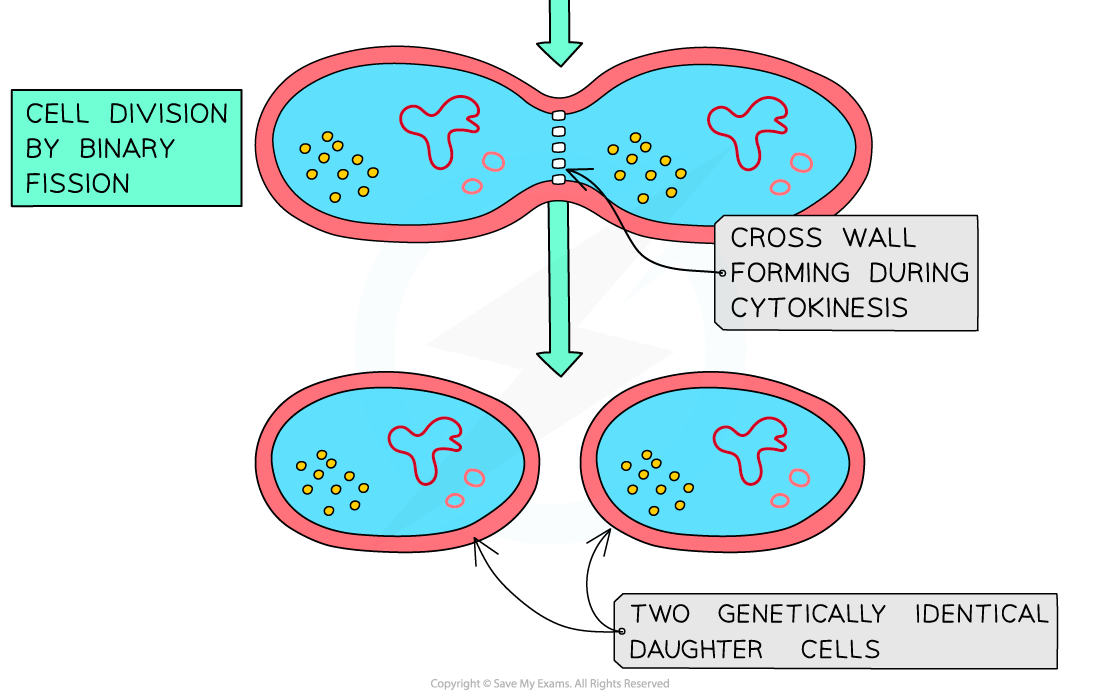Prokaryotic Cell Structure
- The cell structure of organisms determines whether they are prokaryotic or eukaryotic
- Prokaryotes have the simplest cell structure, being the first organisms to evolve on Earth and have been classified into two domains:
- Bacteria or Eubacteria - 'true' bacteria, includes commonly known bacteria such as E.coli and Helicobacter
- Archaebacteria or Archaea - typically found in extreme environments such as high temperatures and salt concentrations and include methanogens (organisms that exist in anaerobic conditions and produce methane gas)
- Prokaryotic cells are small, ranging from 0.1µm to 5.0µm
- Prokaryotes have cells that lack a nucleus (the greek roots of prokaryote are 'pro' = before and 'karuon' = nut or kernel, relating to 'before the nucleus')
Cell structure
- The cytoplasm of prokaryotic cells is not divided into compartments, it lacks membrane-bound organelles (except for ribosomes)
- Prokaryotic ribosomes are structurally smaller (70 S) in comparison to those found in eukaryotic cells (80 S)
- Prokaryotes do not have a nucleus, but they do have genetic material. This is generally in the form of a single circular DNA molecule (not associated with proteins) located in the nucleoid and in smaller loops called plasmids
- Prokaryotes have a cell wall containing murein/peptidoglycan (a glycoprotein)
- The cell wall acts as protection, maintains the shape of the cell and prevents the cell from bursting
- In addition, many prokaryotic cells have a few other structures that differentiate the species from others and act as a selective advantage, examples of these are:
- Plasmids
- Capsules
- Flagellum
- Pili
- Plasmids are small loops of DNA that are separate from the main circular DNA molecule
- Plasmids contain genes that can be passed between prokaryotes (e.g. genes for antibiotic resistance)
- Some prokaryotes (e.g. bacteria) are surrounded by a final outer layer known as a capsule. This is sometimes called the slime capsule
- It helps to protect bacteria from drying out and from attack by cells of the immune system of the host organism
- Flagellum (plural = flagella) are long, tail-like structures that rotate, enabling the prokaryote to move (a bit like a propeller)
- Some prokaryotes have more than one
- Pili are shorter and thinner structures than flagella
- They assist with movement, avoidance of attack by white blood cells, conjugation (the sexual mode for bacteria) and are commonly used to allow bacteria to adhere to cell surfaces
 Prokaryotic cells are often described as being ‘simpler’ than eukaryotic cells, and they are believed to have emerged as the first living organisms on Earth
Prokaryotic cells are often described as being ‘simpler’ than eukaryotic cells, and they are believed to have emerged as the first living organisms on Earth
Exam Tip
Make sure you learn the typical structures and organelles found in prokaryotic cells, as well as their functions.
Binary Fission
Prokaryotes divide by binary fission
- Binary fission is a type of asexual reproduction where the parent cell splits into two daughter cells, roughly equal in size
- During the binary fission process in prokaryotes:
- The single circular chromosome replicates when signalled
- The cell elongates resulting in the chromosome copies separating
- A cross wall (septum) forms in the middle of the cell dividing the cytoplasm (cytokinesis)
- Two daughter cells are formed
- As each daughter cell contains an exact copy of the parental circular chromosome they are clones


Prokaryotes divide by binary fission